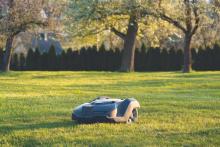- Short range radio modules
- Positioning chips and modules
u-blox Products
- Product selector
- Previous generations
- Contact sales
Find products
- Support portal
- Evaluation Kits and partner products
u-blox Support
- Product documentation
Documentation
- Investor relations
Investor relations
Stories
|
03 May 2019
HiRain Technologies and u-blox team up to compete in the Internet of Vehicles (IoV) market
The IoV (Internet of Vehicles), the network of IoT enabled vehicles that constantly communicate with each other and their surroundings to enable autonomous driving, has become the fastest-growing segment of the broader Internet of Things market.

With the gradual consolidation of wireless communication standards and the rapid improvement of smart automotive technology, the pace of development of connected cars is picking up. Notably, the development of electric driving has taken the back seat to other key trends in ecological automotive development, including low-carbon energy sources, lightweight materials for car bodies, intelligent functions, intelligent traffic management systems, and vehicle sharing schemes.
The IoV (Internet of Vehicles), the network of IoT enabled vehicles that constantly communicate with each other and their surroundings to enable autonomous driving, has become the fastest-growing segment of the broader Internet of Things market, with a CAGR of 22.9% from 2016 to 2019.[1] And IHS Markit forecasts that by 2022, the size of the global connected car market will reach 350 million units, or 24% of the global car market. New sales of connected cars will reach 98 million, or 94% of the market.
Within the IoV, each vehicle features a smart “brain,” capable of complex behavior including environmental perception, intelligent decision-making, and coordinated control and execution, making safe, comfortable, energy-efficient and even automatic driving possible.
But according to Dr. Qi Zhanning, President of HiRain Technologies, “Despite its exciting prospects, the IoV market in China has not yet established a sound, sustainable, and profitable business model that will facilitate profit sharing among all stakeholders.” And he isn’t alone to hold this opinion. At the end of last year, in a white paper,[2] the China Academy of Information and Communications Technology (CAICT) stated that “the business model of smart traffic applications and collaborative applications based on autonomous driving are still in their infancy.”
That doesn’t mean that it isn’t growing, though. According to a report[3] issued by the China's Ministry of Industry and Information Technology (MIIT) in December 2018, China’s IoV market is expected to maintain its over 40% growth rate, exceeding RMB200 billion (around US$ 30 billion) by 2025. “I believe that the growth of IoV technology will greatly drive domestic and even global market demand, add a new exciting motor to the overall automotive market," says Dr. Qi, who has been focusing on IoV technology and intelligent driving for many years.
With offices not only in Beijing, Shanghai, Chengdu, and Shenzhen, but also in the auto-industry hotspots Detroit and Munich, HiRain Technologies has been active in research and development and the production of electronic products. The company further offers consulting services, acts as a proxy for R&D tools, and provides professional training and other services. Manufacturing plants in Shanghai and Tianjin put out 10 million vehicle control units each year, and, once operational, a new manufacturing plant in Nantong should add up to 20 million sets of auto accessories to that.
According to its president, the company is pursuing a pragmatic goal: building solid understanding of the automotive network architecture, vehicle control software, system integration, and the competitor landscape. In doing so, it has been able to provide customers with custom solutions. And it has contributed to taking China’s automotive technology to the global stage.
Expanding the market to overseas was a strategic decision by HiRain Technologies, as was its 2015 decision to partner with u‑blox. “u-blox has undoubtedly brought us leading and professional technical support. We believe in 'mutual-trust, respect, and absolute honesty in all relationships’, which corresponds to the integrity and ingenuity advocated by u-blox, a spiritual heritage of Swiss companies. Both sides adhere to winning the market with product technologies and services, instead of low-price competition. We team up to create trustworthy products, and regard quality as our common business philosophy," says Dr. Qi.
A key challenge, says Dr. Qi, is finding a business model for IoV that customers are willing to pay for. The most reliable, he says, is the V2X (Vehicle-to-everything) real-time network to improve safety and ease congestion. "Although there is still a long way to go before introducing innovative business models, China's biggest advantage is the vast market, so business model innovation is bound to be the future direction. But firstly we must have a clear self-recognition, respond quickly to the market with advanced technologies as our basic premise, then identify and make a breakthrough with innovative business models."
What both sides are optimistic about is that with the release of favorable policies and the enthusiasm of the capital market, the IoV development already has rare opportunities. It has a bright future as long as various stakeholders in the industry grasp opportunities, emphasize technology and innovation, put customer needs first, and make proper use of every objective and favorable condition.
[1] National Guidelines for Developing the Standards System of Internet of Vehicles Industry, Ministry of Industry and Information Technology (MIIT), Standardization Administration of China (SAC), 2017
[2] White Paper on Internet of Vehicles (2018) released by China Academy of Information and Communications Technology (CAICT)
[3] Action Plan for the Development of the Internet of Vehicles Industry
Zhanning Qi
Dr., HiRain Technologies



